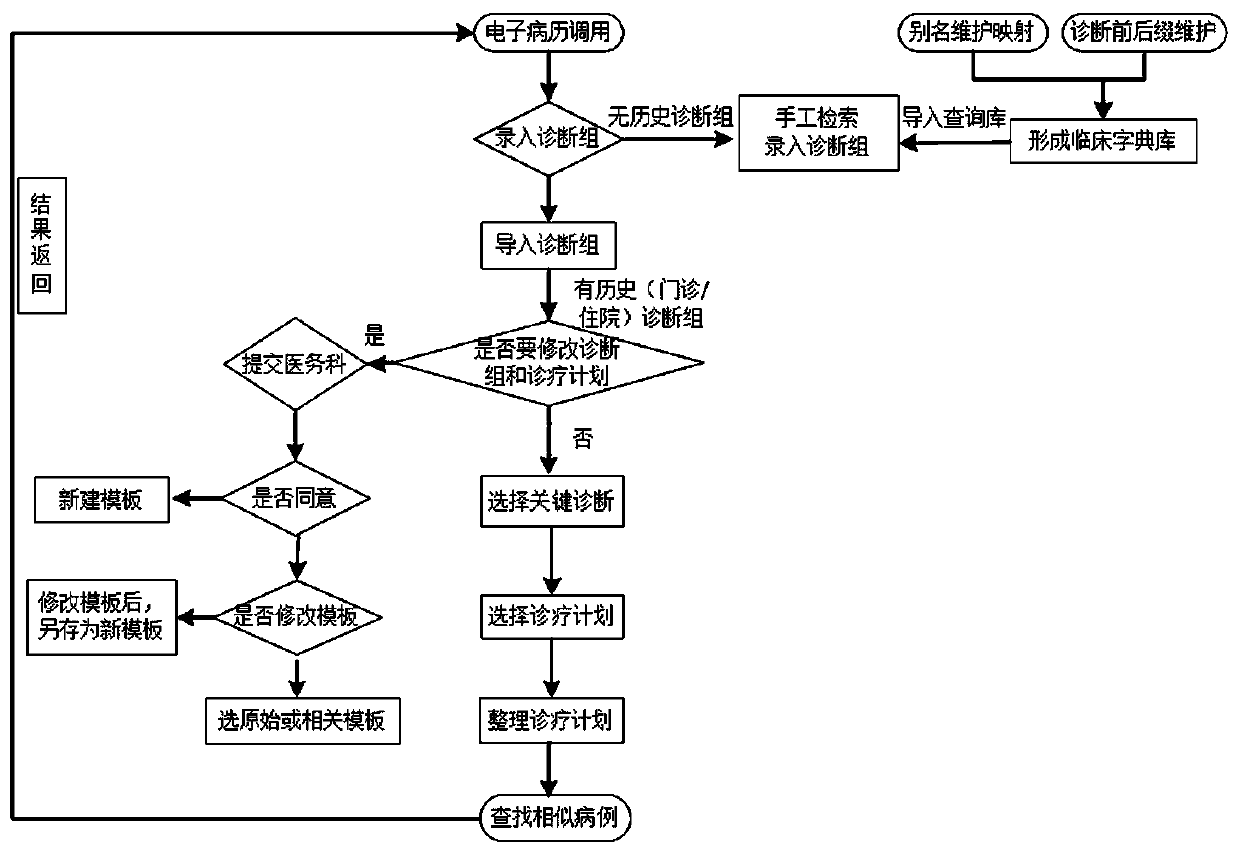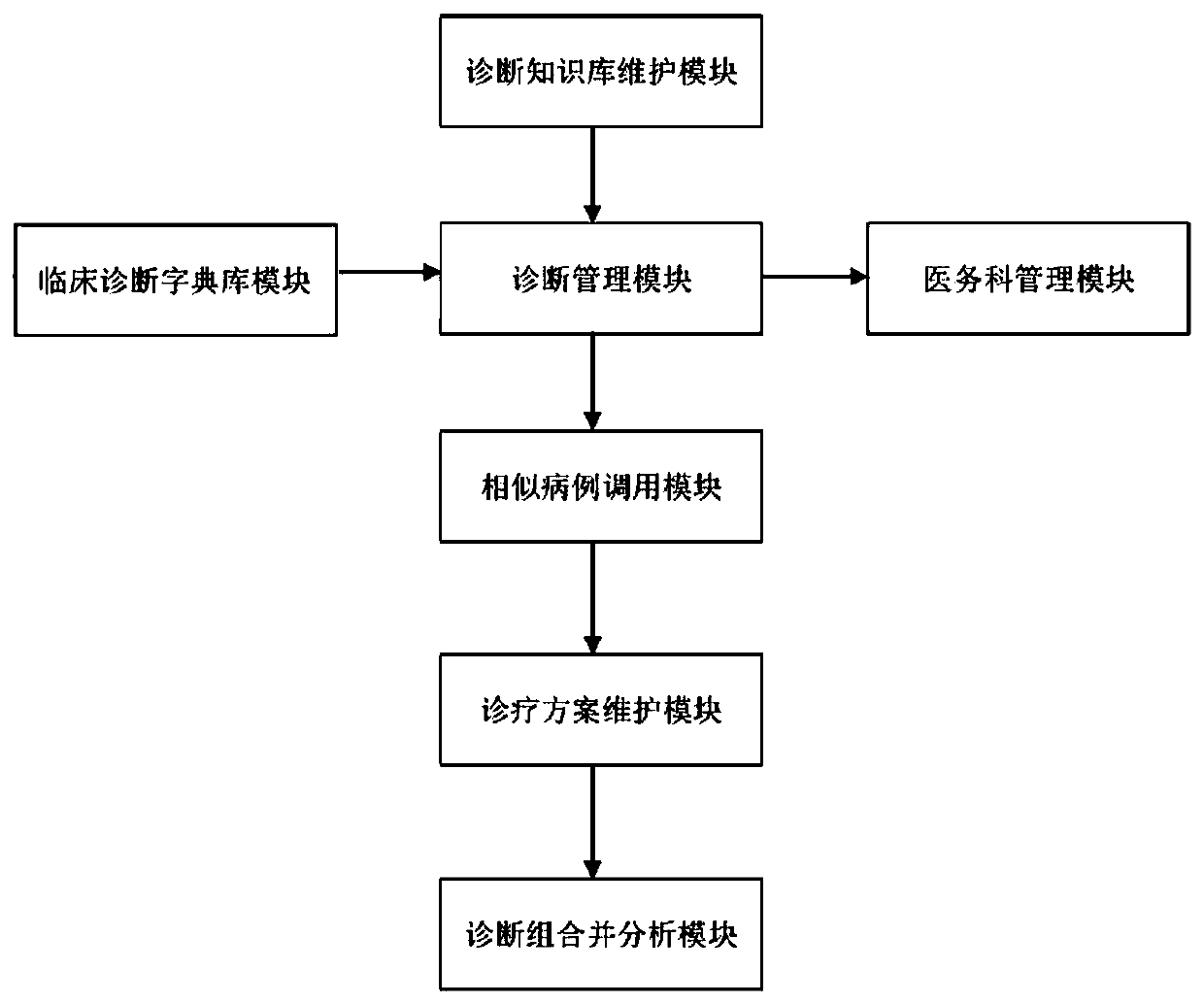Diagnostic group management system
A group management and diagnosis group technology, applied in the field of medical information, can solve the problems of incompatibility of the diagnosis group grouping system and unreasonable grouping of the diagnosis group grouper.
- Summary
- Abstract
- Description
- Claims
- Application Information
AI Technical Summary
Problems solved by technology
Method used
Image
Examples
Embodiment 1
[0111] Such as Figure 1~Figure 20b As shown, the specific implementation steps of the diagnosis group management system are as follows:
[0112] S1. The diagnostic knowledge base maintenance module imports disease-related etiological diagnosis, pathological anatomical diagnosis, pathophysiological diagnosis, disease type and stage, and complication diagnosis sequence into the system to form a diagnostic group-related knowledge base, such as Figure 6~Figure 20bAs shown, coronary atherosclerotic heart disease is divided into stable angina, unstable angina, ST-segment elevation myocardial infarction (STEMI), non-ST-segment elevation myocardial infarction (STEMI), old myocardial infarction , asymptomatic myocardial ischemia, ischemic cardiomyopathy, sudden death, postoperative and postoperative complications, and arrhythmia, etc. ST-segment elevation myocardial infarction (STEMI) is divided into acute right ventricular myocardial infarction, acute inferior wall elevation Recurr...
Embodiment 2
[0119] The preferred solution is as Figure 4 As shown, the steps to implement the diagnostic knowledge base maintenance module are:
[0120]A1. Import the diagnostic knowledge base: Import the diagnostic knowledge base with a hierarchical relationship, and use the tree structure of "root node + child nodes" to group and refine diseases, for example, classify coronary atherosclerotic heart disease into stable types Angina pectoris, unstable angina, ST-segment elevation myocardial infarction (STEMI), non-ST-segment elevation myocardial infarction (STEMI), old myocardial infarction, asymptomatic myocardial ischemia, ischemic cardiomyopathy, sudden death, surgery Later and postoperative complications and arrhythmias.
[0121] A2. Diagnosis knowledge base maintenance: Provide a knowledge base maintenance interface for editing diagnostic hierarchical relationships, realize new diagnostic collections, display maintenance and modification of existing diagnostic collections according...
Embodiment 4
[0141] The steps to implement the similar medical record calling module are:
[0142] C1. Find similar medical records according to the diagnosis group: according to the patient's existing diagnosis and treatment information and basic information, the recommendation algorithm recommends medical records with high disease similarity and high quality as similar cases;
[0143] C2. Check the detailed information of the case: select from recommended similar patients, and check the detailed information of the similar medical records, and the electronic medical record system provides patient medical record access;
[0144] C3. Detailed diagnosis query: focus on the indicators of the first diagnosis group, and then focus on other diagnosis groups in turn. If the diagnosis group is the same, the higher the similarity of the patient's basic information, the higher the priority will be displayed. If the key diagnosis is different, the key diagnosis value for the patient Bright colors ind...
PUM
 Login to View More
Login to View More Abstract
Description
Claims
Application Information
 Login to View More
Login to View More - R&D
- Intellectual Property
- Life Sciences
- Materials
- Tech Scout
- Unparalleled Data Quality
- Higher Quality Content
- 60% Fewer Hallucinations
Browse by: Latest US Patents, China's latest patents, Technical Efficacy Thesaurus, Application Domain, Technology Topic, Popular Technical Reports.
© 2025 PatSnap. All rights reserved.Legal|Privacy policy|Modern Slavery Act Transparency Statement|Sitemap|About US| Contact US: help@patsnap.com



